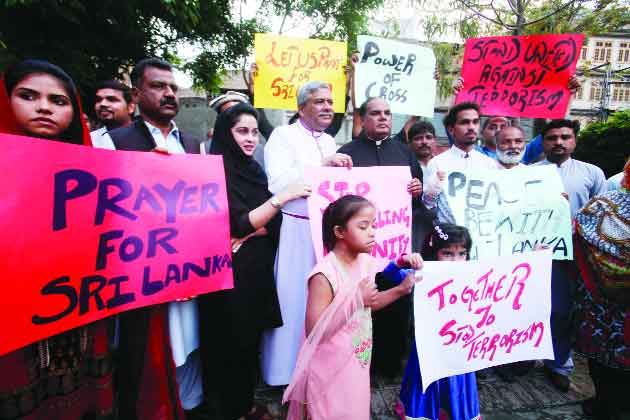It’s time to identify the right sources as attacks on faith shrines are increasing in South Asia, with the Sri Lanka episode being the largest in the history of South Asia. The terrorist attacks in Sri Lanka are a reminder of how militant groups are now sparking up new hotspots where they had no influence before. And they are doing them on a visually soul less scale, like attacking faith shrines, to attract global shock and awe besides working up least expected touch points in the Philippines, Indonesia, New Zealand, Bangladesh and Sri Lanka. That also explains why the Islamic State (IS) chose the relatively calmer Sri Lanka to imprint its signature despite having an operative base in neighbouring Maldives. Besides, most of South and Southeast Asia are multi-cultural and eclectic societies, which may not host the idea of a monolithic socio-religious identity but where divisions can be fomented by playing on latent communal fears and insecurities. The mosque attacks in Christchurch or the church blasts in Sri Lanka are the manifestations of a global trend of an increasing pattern of hitting at faith shrines in South Asia, a sort of theatre for the new-age crusades, according to the University of Maryland’s Global Terrorism Database. The study shows that the region alone accounts for about 24 per cent of all terror strikes on places of worship worldwide between 2000 and 2017. Of the total 1,909 terror attacks on religious institutions globally, 458 incidents have been recorded in the South Asian region, which comprises Afghanistan, Bangladesh, Bhutan, India, Maldives, Nepal, Pakistan and Sri Lanka. After Pakistan and Afghanistan, India is reportedly the third-most affected country in the region with 63 terror attacks on religious shrines.
Clearly the IS, which is increasingly under fire in its old strongholds and almost floundering in both Iraq and Syria, has some funding and the digital infrastructural network to rebuild its relevance. So it is spreading to virgin areas, setting off new counter-polarities easily and keeping its need for a global jihad alive. As usual, operatives are using online propaganda to radicalise disaffected youth in Europe, recruiting from waning organisations like the Taliban in Afghanistan and Boko Haram in Nigeria and looking for places that have a security vacuum. Sri Lanka fits the bill perfectly on this count because post the decimation of the Tamil militants, the island nation has by and large been peaceful, developed itself as a booming tourist economy and risen on the world map of top beach hotspots. The casualties would be high in such a porous set-up. The surprise element was such that till two days after the blasts happened, nobody had talked about simmering tensions between Sinhala Buddhists and Muslims, which were inherent but never explosive enough. You could say they were contained flash points that militant organisations are now linking to stage a new global conflict. If we look at Southeast Asia, then Thailand and the Philippines have had long-standing conflicts along territorial and religious lines. In Indonesia, the Aceh province and Papua island have been in conflict with Jakarta while Bali continues to hold off fundamentalism. Myanmar is riven by issues of ethnicity, territory and religion as the purging of Rohingya Muslims, which sparked an unprecedented humanitarian crisis and further deepened divisions, has shown. Sadly, these attacks have also set up polarised contexts that have further fuelled hate speech and increasingly led to an assertion of identity through new faith shrines. As hate speeches encourage the intolerance of otherness, becoming the new normal, and the attendant fake news factory rapidly unleashes a communication war, the terrorists get a swell of divided sentiments to play upon. As for the States, they are left with little option but to crack down, somewhat at the cost of existing religious freedoms. But curbing terror is just one facet, there is a new face of terror emerging in 2019, one that is not confined to the Middle East but to the former Soviet republics. In 2017, at least 8,500 fighters from former Soviet republics had flocked to Syria and Iraq to join the IS and are now being deployed, given their ease with some European languages, to newer areas. In short, the only way to kill rapidly mutating terror is to be prepared for the unexpected. Till governments form an alliance to think two steps ahead, terror will continue to be the worst scourge of human history.
Writer & Courtesy: The Pioneer








 OpinionExpress.In
OpinionExpress.In















Comments (0)